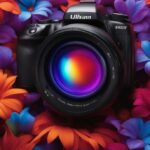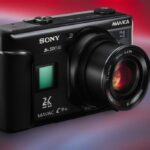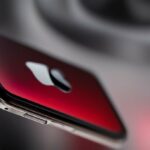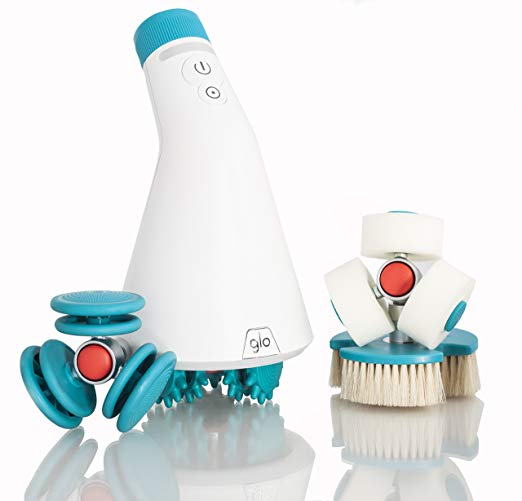Last Updated on 6 months by Francis
Have you ever wondered if your iPhone can take infrared pictures? As we all know, the iPhone is equipped with an impressive camera, but can it capture the invisible spectrum of infrared light? In this section, we’ll explore the possibilities of infrared photography with iPhones and answer the question of whether or not iPhones can take infrared pictures.
Infrared photography has long been a fascinating and compelling technique among photographers, allowing them to capture unique and surreal images that cannot be seen with the naked eye. But can iPhones do the same? Let’s find out!
Contents
Key Takeaways:
- iPhones may not have native infrared capabilities, but there are external accessories and software solutions available.
- Infrared photography offers a unique and creative way to capture images.
- Understanding the technical aspects of infrared photography can help you make the most out of your iPhone camera.
- Practical tips and techniques can help you capture stunning infrared images with your iPhone.
- Being aware of the limitations and considerations of using iPhones for infrared photography is important.
Understanding Infrared Photography
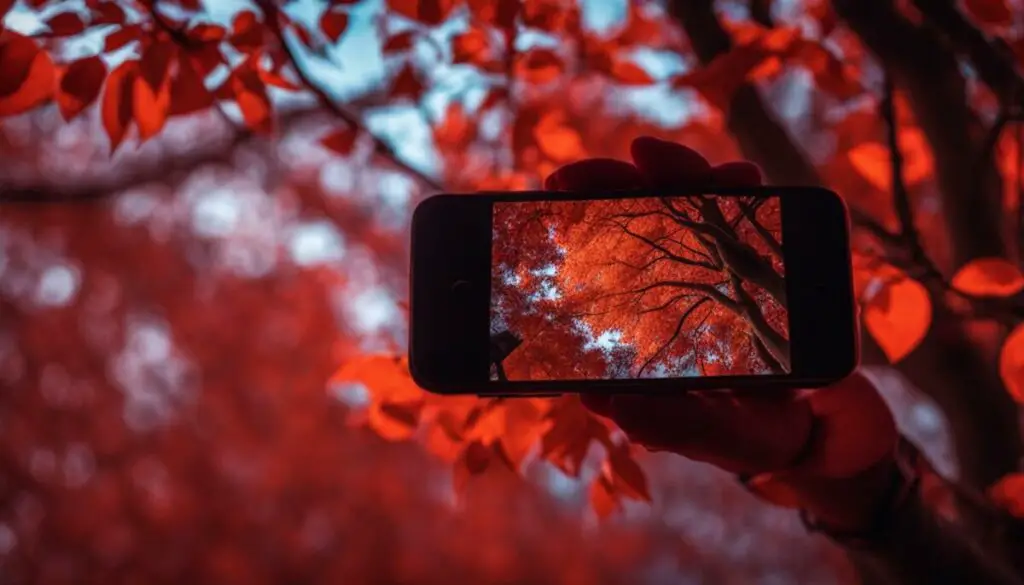
Before exploring the potential of iPhones for capturing infrared pictures, it’s essential to understand the basics of infrared photography. Unlike conventional photography, infrared cameras or filters capture light beyond the visible spectrum, creating images with unique colors and textures.
Infrared photography is often used in scientific and industrial applications, such as detecting heat loss in buildings or identifying plant health. However, it has also gained popularity in artistic and creative circles, producing surreal and dreamlike images that capture the unseen world.
To capture infrared images with an iPhone, you need to modify the camera’s sensor or lens to detect infrared light. This can be done through external accessories or software solutions, as we will discuss in further detail later.
When taking infrared photos, keep in mind that the colors and brightness of objects may differ significantly from what you see with your eyes. Vegetation, for example, appears white or pink, while the sky can turn a deep blue. Experimentation and practice are key to mastering infrared photography and producing captivating images.
How to Capture Infrared Images with iPhones
There are several ways to capture infrared images with iPhones, each with its own advantages and limitations. Here are some options:
- External Infrared Filters: These are filters that attach to your iPhone’s camera lens, blocking visible light and allowing infrared light to enter. They come in a variety of types, such as screw-on or clip-on, and can be used to achieve different effects. However, they may require longer exposure times and may not fit all iPhone models.
- External Infrared Lenses: These are lenses that replace your iPhone’s existing lens, allowing it to capture infrared images without the need for additional filters. They offer higher image quality and flexibility than filters but can be more expensive.
- DIY Infrared Conversion: If you’re feeling adventurous, you can modify your iPhone’s camera yourself to capture infrared images. This involves removing the infrared-blocking filter from the sensor and replacing it with a visible-light-blocking filter. However, this process requires technical skills and can potentially damage your iPhone.
- Infrared Photography Apps: There are several apps available that claim to enable infrared photography on iPhones without the need for external accessories. However, their effectiveness and image quality may vary, so it’s essential to do your research before investing in them.
The Science Behind Infrared Photography

Before we dive into the technical aspects of capturing infrared images on iPhones, let’s first understand the science behind it. Infrared light falls outside the visible spectrum of light that human eyes can detect. Infrared photography captures the infrared radiation that is emitted or reflected by objects in the environment.
Most iPhone cameras come with a visible light filter that blocks out infrared radiation and only allows visible light to pass through. To capture infrared images, the filter needs to be removed or replaced with one that allows infrared light to pass through.
Infrared light has a longer wavelength than visible light, ranging from about 700 nanometers to 1 millimeter. The longer wavelength of infrared light means that it can penetrate certain materials more effectively than visible light. This property is often utilized in applications such as night vision and thermal imaging.
When infrared radiation is captured by a camera, it is translated into a visible image by assigning color values to the different levels of infrared radiation detected. This process is similar to how visible light is captured and translated into images by a camera.
Infrared photography allows us to see the world in a different light and uncover hidden details that are not visible to the naked eye. With the right tools and techniques, iPhones can be used to capture stunning infrared images that reveal a new perspective on the world around us.
Native Infrared Capabilities of iPhones

If you’re looking to capture infrared images with your iPhone, you may be wondering whether the device has the necessary native capabilities. Let’s take a closer look at the specifications of iPhone cameras to see whether they are equipped with the sensors needed to detect infrared light.
| Device | Infrared Capabilities |
|---|---|
| iPhone 12 Pro Max | No native infrared capabilities |
| iPhone 12 Pro | No native infrared capabilities |
| iPhone 12 | No native infrared capabilities |
| iPhone SE (2nd generation) | No native infrared capabilities |
| iPhone 11 Pro Max | No native infrared capabilities |
| iPhone 11 Pro | No native infrared capabilities |
| iPhone 11 | No native infrared capabilities |
| iPhone XR | No native infrared capabilities |
| iPhone Xs Max | No native infrared capabilities |
| iPhone Xs | No native infrared capabilities |
| iPhone X | No native infrared capabilities |
| iPhone SE | No native infrared capabilities |
| iPhone 8 Plus | No native infrared capabilities |
| iPhone 8 | No native infrared capabilities |
| iPhone 7 Plus | No native infrared capabilities |
| iPhone 7 | No native infrared capabilities |
| iPhone 6s Plus | No native infrared capabilities |
| iPhone 6s | No native infrared capabilities |
As evidenced by the table above, iPhones do not have native infrared capabilities. This means that relying solely on the device’s camera will not produce infrared images. However, there are external accessories and software solutions available that can enable infrared photography on iPhones and enhance their capabilities.
Third-Party Accessories for Infrared Photography
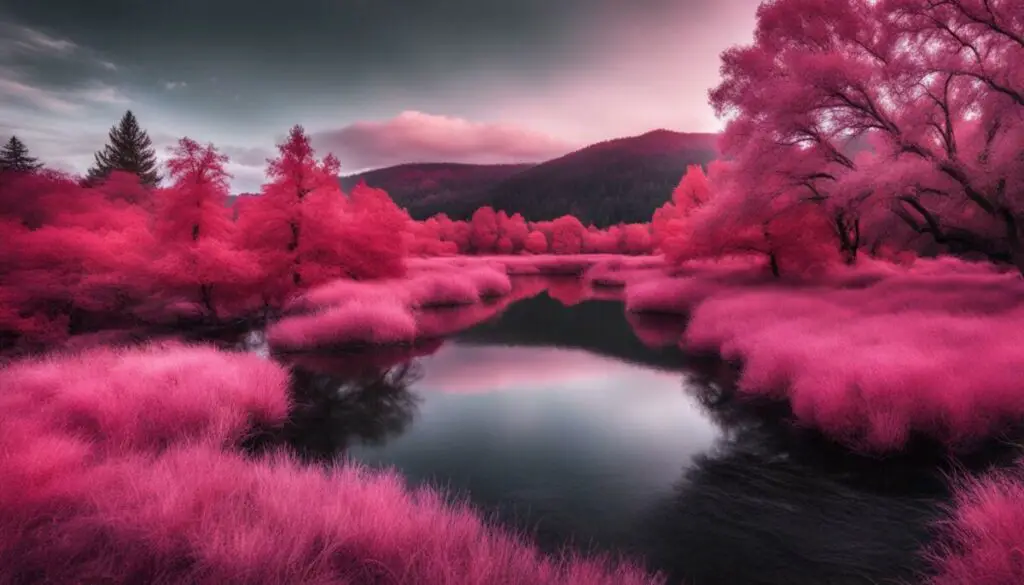
While iPhones don’t have built-in infrared capabilities, there are several third-party accessories that you can use to capture stunning infrared images. These accessories work by blocking visible light and allowing only infrared light to reach the camera sensor.
One of the most popular options is the Hoya R72 Infrared Filter. This filter can be attached to the lens of your iPhone camera and allows you to capture infrared images with a deep red or magenta tint. It’s important to note that using an infrared filter will significantly reduce the amount of light that reaches the camera sensor, so you’ll need to use longer shutter speeds or higher ISO settings to compensate.
Tip: When using an infrared filter, it’s also important to keep your iPhone stable to avoid motion blur. Consider using a tripod or stabilizer for best results.
Another option is to use external lenses that have infrared capabilities built-in. For example, the RhinoShield Wide + Macro Lens includes an infrared lens element that can capture stunning infrared images with ease. This lens also has a wide-angle and macro capabilities, making it a versatile option for all types of photography.
| Pros of Infrared Accessories | Cons of Infrared Accessories |
|---|---|
| Can capture stunning infrared images with iPhones | Can be expensive |
| Allows for creative exploration in infrared photography | May require longer shutter speeds or higher ISO settings |
| External lenses can offer additional features and capabilities | Can be bulky and difficult to carry around |
When choosing an infrared accessory for your iPhone, consider your budget, the features you need, and the type of photography you plan to do. With the right accessory, you can unlock the full potential of infrared photography with your iPhone.
Software Solutions for Infrared Photography on iPhones
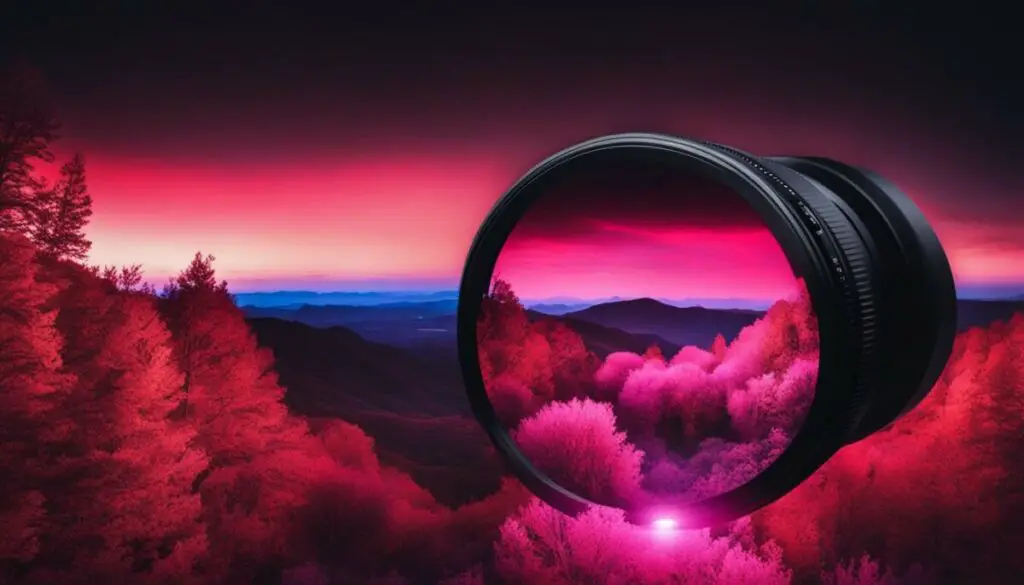
If you’re looking to explore the world of infrared photography with your iPhone, there are software solutions available that can help you achieve stunning results. These apps and editing tools can enable infrared photography by adjusting the colors and tones of your images to create a false-color effect that mimics the appearance of infrared light.
One popular app for infrared photography on iPhones is ProCamera, which offers a variety of features and settings for capturing and editing infrared images. The app includes a live histogram to help you adjust the exposure settings for optimal image quality, as well as color channel swapping and false-color presets to create unique and striking images.
Another option is Rawtherapee, a free and open-source editing software that allows you to process RAW infrared images captured with a third-party camera accessory. The software offers advanced editing features such as tone mapping and channel mixer adjustments, allowing you to fine-tune your infrared images for optimal results.
When using software solutions for infrared photography with iPhones, it’s important to keep in mind that the results may not be as accurate or precise as images captured with specialized infrared cameras. However, these tools can still offer a fun and accessible way to experiment with infrared photography and push the creative boundaries of your iPhone camera.
Tips and Techniques for Infrared Photography with iPhones
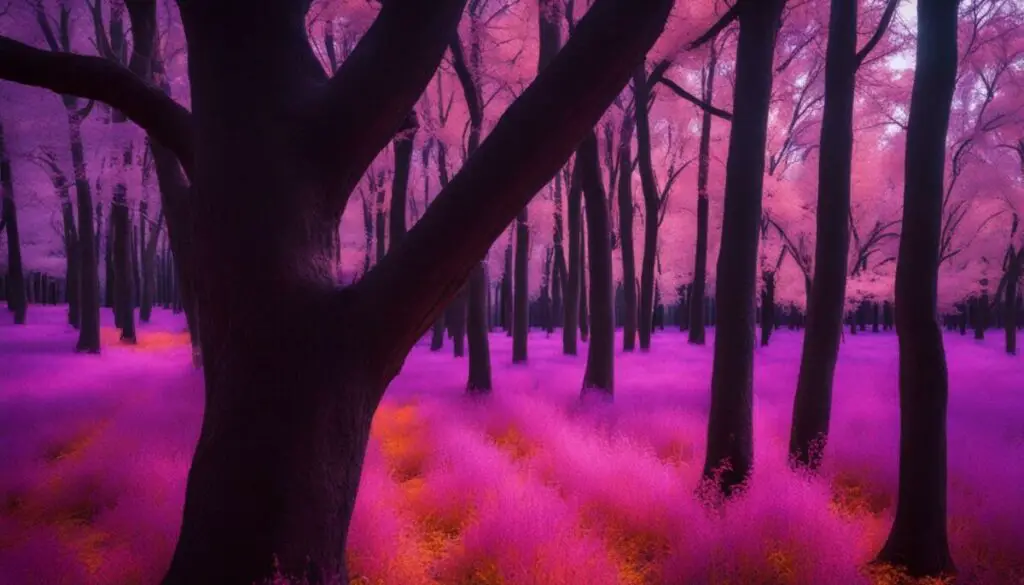
Now that you have a basic understanding of infrared photography and the capabilities of iPhones in this field let’s dive into some practical tips and techniques for capturing stunning infrared images with your iPhone.
1. Find the Right Lighting Conditions: Infrared photography works best in bright sunlight or during the golden hours of sunrise and sunset. Make sure there is ample light to capture the infrared spectrum.
2. Use Manual Focus: Due to the unique properties of infrared light, the auto-focus feature of your iPhone camera may not work as expected. Use the manual focus option to ensure sharp and focused images.
3. Experiment with Exposure: Infrared light can be unpredictable, which can lead to over or underexposed images. Experiment with different exposure values to find the right balance and enhance the unique properties of infrared light.
4. Invest in Filters: External infrared filters can help block visible light and capture only the infrared spectrum. Invest in quality filters to enhance the overall quality of your infrared images.
5. Post-Processing: Infrared images often require some post-processing to bring out the unique colors and characteristics of infrared light. Use editing tools such as Lightroom, Snapseed, or Photoshop to fine-tune your images.
6. Choose the Right Subject: Not all subjects are ideal for infrared photography. Experiment with landscapes, foliage, and architecture to find the subjects that showcase the unique characteristics of infrared light.
Use these tips and techniques to experiment with infrared photography using your iPhone and capture stunning images that showcase the unseen world of infrared light!
Examples of Infrared Photography with iPhones
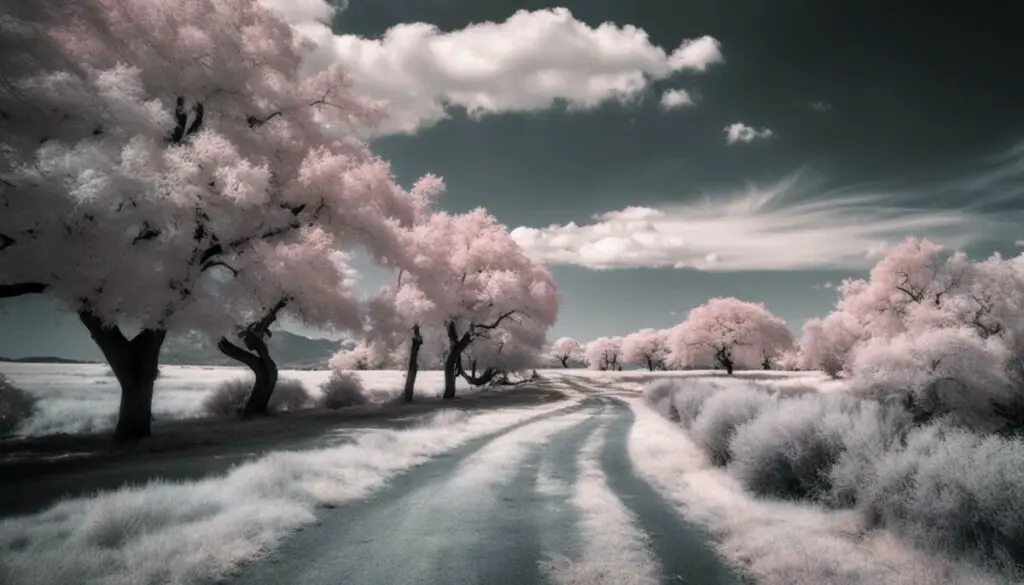
Are you still unsure about the creative potential of infrared photography with iPhones? Check out these stunning examples captured by fellow iPhone photographers!
Example 1: Dreamy Landscapes
This stunning image showcases the ethereal and dreamy qualities of infrared photography. The landscape appears lush and otherworldly, with the foliage taking on a white, almost ghostly appearance. The iPhone’s ability to capture infrared light creates a unique and beautiful perspective that is sure to captivate viewers.
Example 2: Haunting Portraits
Infrared photography can also be used to create dramatic and haunting portraits. This powerful example showcases the contrast between the model’s skin and the darker background, creating an eerie and evocative image. By using an external infrared lens, the photographer was able to achieve this stunning effect with their iPhone.
Example 3: Striking Architecture
With the iPhone’s accessibility and portability, capturing infrared images of architectural marvels has never been easier. This striking example showcases a unique perspective of a familiar landmark, with the infrared light highlighting the intricate details and patterns of the building’s facade. The photographer was able to achieve this effect with a combination of an infrared filter and post-processing techniques.
Example 4: Vibrant Botanicals
Infrared photography can also bring out the vibrant colors and textures of botanical subjects. This stunning example showcases the delicate beauty of flowers, with the infrared light emphasizing the intricacies of the petals and leaves. The photographer was able to capture this image using an external infrared lens and post-processing techniques.
These examples are just a glimpse of the creative potential that infrared photography with iPhones holds. With a bit of experimentation and practice, you too can capture stunning images with your iPhone that showcase the unseen beauty of the world around us.
Limitations and Considerations
While the possibilities of infrared photography with iPhones are exciting, it’s important to note that there are certain limitations and considerations to keep in mind.
Firstly, the image quality of infrared photos taken on iPhones may not be as high as those taken on specialized infrared cameras. This is partly due to the fact that iPhones do not have native infrared capabilities, and external tools may not fully compensate for this limitation.
Another factor to consider is the range of infrared sensitivity. While iPhones can capture some infrared light, they are not able to detect the full spectrum of infrared wavelengths. This may limit the creative potential of infrared photography with iPhones.
Finally, it’s important to note that infrared photography can be affected by external factors such as weather, lighting, and reflective surfaces. Infrared photos can also be affected by interference from heat sources, such as the warmth from human bodies.
Despite these limitations and considerations, infrared photography with iPhones remains a unique, creative, and accessible option for enthusiasts looking to explore the unseen world of infrared light.
“Infrared photography is like a dream, it takes you to a different world beyond the visible.”
Infrared Photography with iPhones: A World of Possibilities
From understanding the unique characteristics of infrared light to exploring the native and third-party options for capturing infrared photos on your iPhone, we have covered a lot in this article. There’s no denying that infrared photography with iPhones offers a world of creative possibilities for enthusiasts looking to capture breathtaking infrared images.
Whether you choose to invest in external hardware, software, or simply experiment with your existing iPhone camera, the potential for capturing stunning infrared images is within reach. By keeping in mind the limitations and considerations that we have discussed, you can get the most out of your iPhone for infrared photography and create unique works of art that showcase the unseen world of infrared light.
Conclusion
Congratulations on reaching the end of our article exploring the possibilities of infrared photography with iPhones. We hope you found this guide informative and inspiring, and that it has opened up new avenues for creative experimentation.
While iPhones may not have native infrared capabilities, we have shown that through the use of external accessories and software solutions, you can unlock the potential of your iPhone camera for infrared photography. From filters and lenses to editing tools and apps, there are many options available to explore.
However, it’s important to keep in mind the limitations and considerations when working with iPhones for infrared photography. Factors such as image quality, range of infrared sensitivity, and hardware limitations may impact your results and experience.
Nonetheless, with the proper techniques and equipment, the world of infrared photography with iPhones is at your fingertips. So go ahead and venture into this exciting field, capture unseen beauty, and share your art with the world!
FAQ
Can iPhones capture infrared pictures?
No, iPhones do not have native infrared capabilities. However, there are third-party accessories and software solutions available that can enhance an iPhone’s ability to capture infrared images.
What is infrared photography?
Infrared photography is a technique that involves capturing light in the infrared spectrum, which is invisible to the human eye. It produces unique and ethereal images with a distinct appearance.
How can I capture infrared images with my iPhone?
To capture infrared images with an iPhone, you will need to use external accessories such as lenses, filters, or attachments specifically designed for infrared photography. Additionally, there are software solutions available that enable infrared photography on iPhones.
What are the limitations of using iPhones for infrared photography?
iPhones have certain limitations when it comes to infrared photography, such as image quality and the range of infrared sensitivity. Additionally, the use of third-party accessories or software solutions may require additional investment.
Are there any tips for capturing infrared images with iPhones?
Yes! When capturing infrared images with iPhones, it’s important to pay attention to composition, exposure, and post-processing techniques. Experimentation and practice will help you achieve stunning infrared photographs.
Can you provide examples of infrared photography with iPhones?
Absolutely! We showcase a selection of impressive infrared images captured using iPhones to inspire and demonstrate the creative potential of infrared photography with iPhones.
What considerations should I keep in mind when using iPhones for infrared photography?
Some considerations include the image quality, the range of infrared sensitivity, and the need for additional accessories or software solutions. It’s important to understand these factors before embarking on your infrared photography journey with an iPhone.
Can I convert my iPhone into an infrared camera?
While iPhones do not have native infrared capabilities, the use of external accessories and software solutions can enhance an iPhone’s ability to capture infrared images and provide a similar experience to using an infrared camera.


